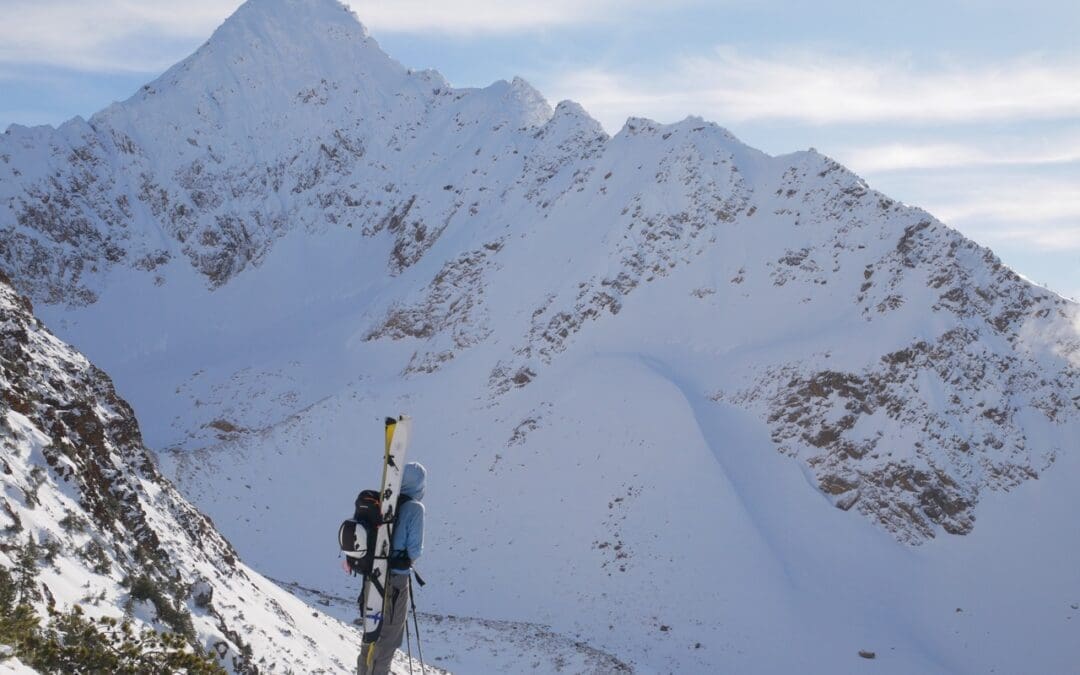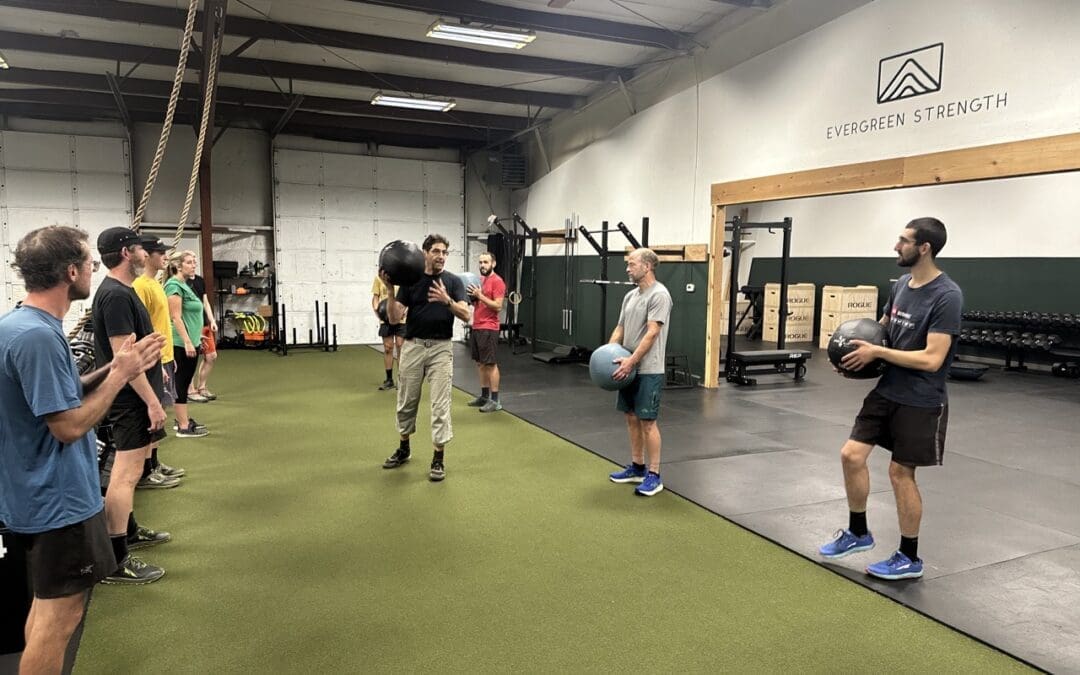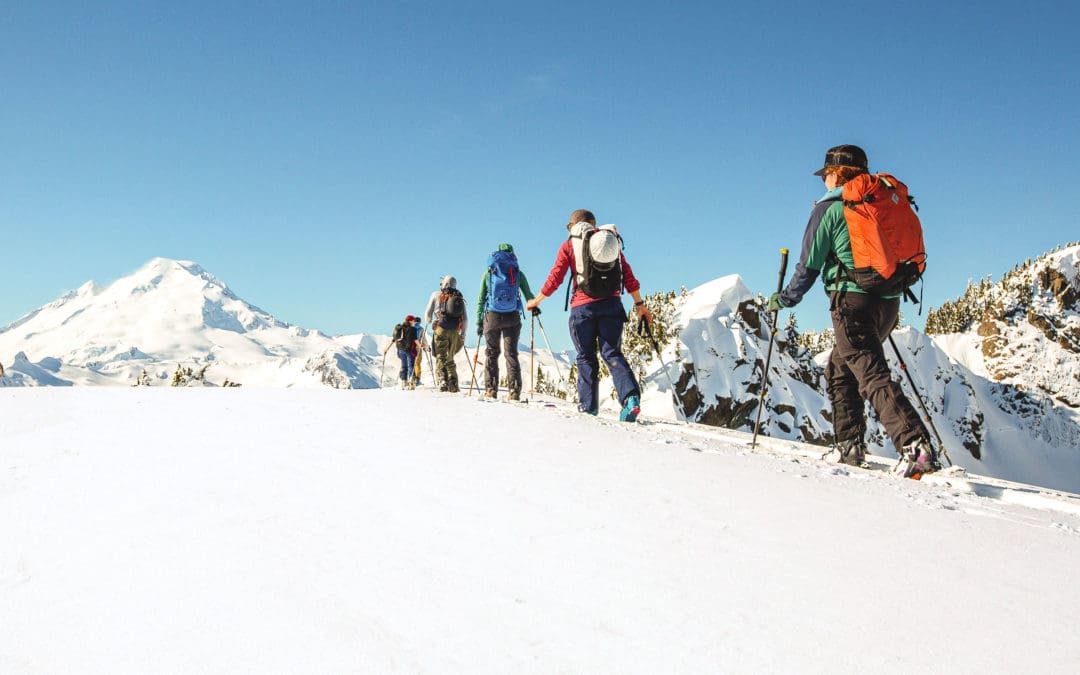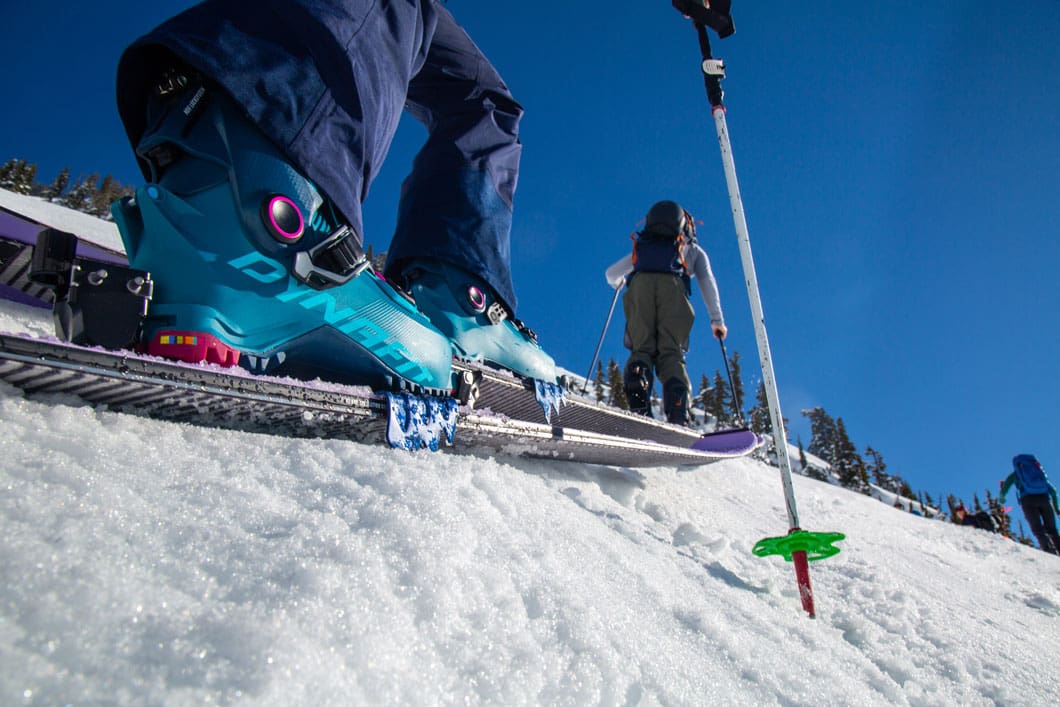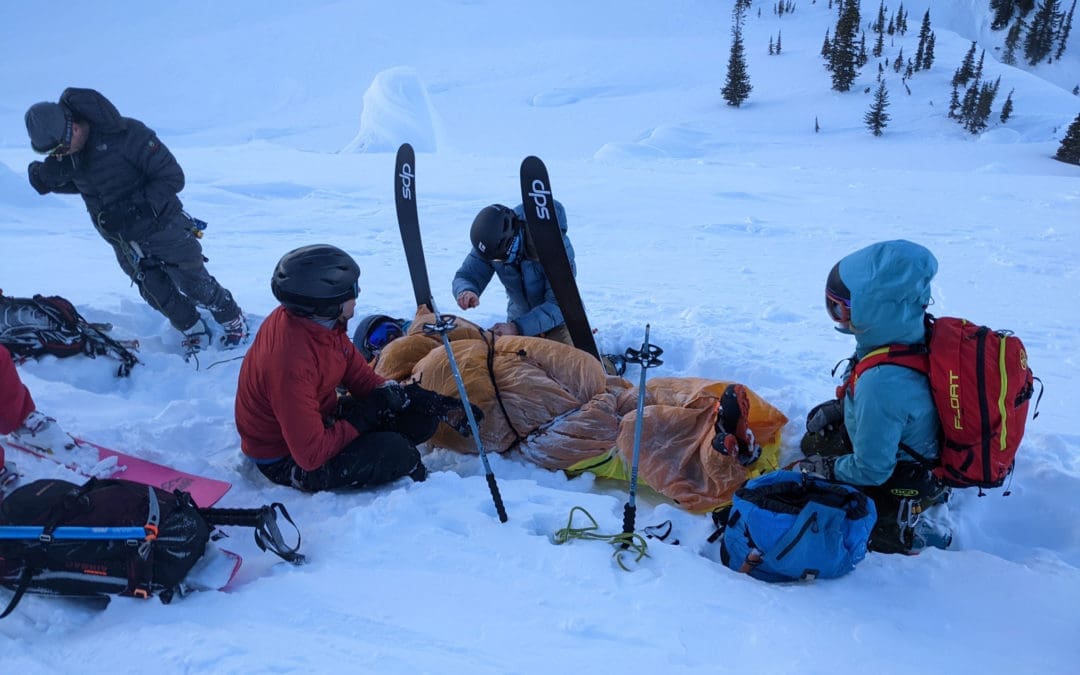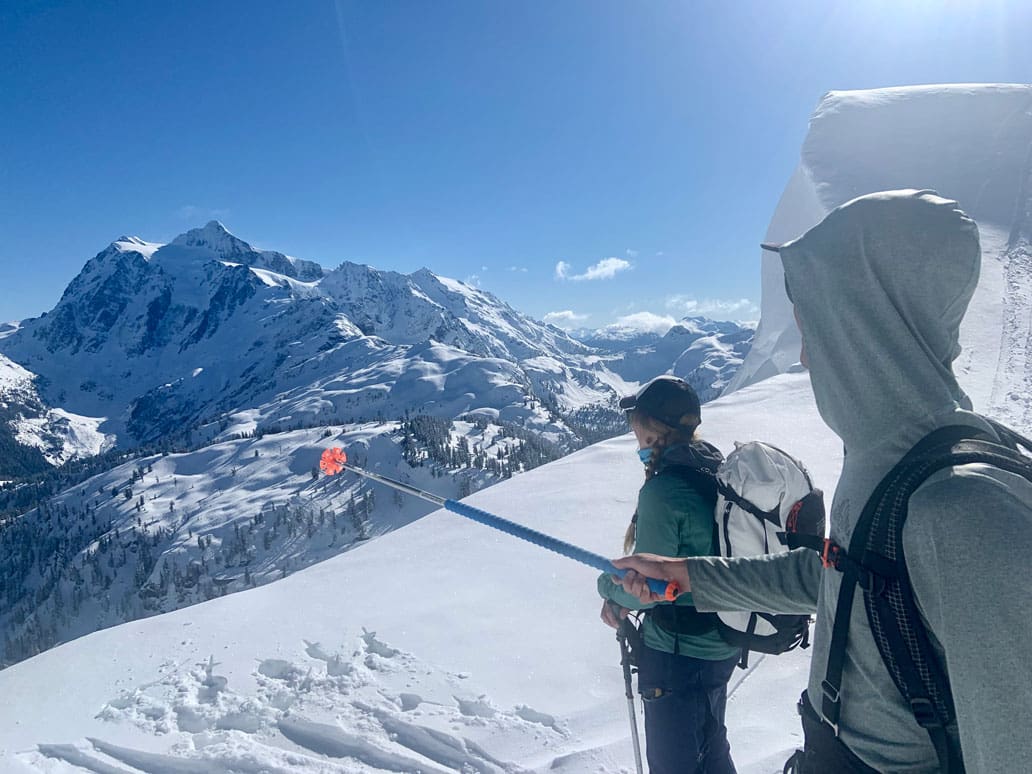How To Make Sure your Avalanche TRANSCEIVER is working
By: Zack McGill
Avalanche beacons (transceivers) nowadays are leaps and bounds better than the original analog beacons of old. Modern three antennae beacons are quick to process information and quite accurate when they’re in good working order and used by someone trained in their operation.
However, these precise instruments can become damaged and de-tuned easier than you might think. Common mistakes are:
- Leaving batteries in the beacon while it’s not in use (like over the summer). Batteries are nasty. If left in a beacon for a time, they can corrode the inside. Take those batteries out to store them! Just remember to put the batteries back in before you go out again.
- Leaving your beacon in the car or outside. Exposing your beacon to drastic temperature changes isn’t great. Temperature changes cause the inner components of your beacon to expand and contract and can cause those components to break. Always remember to take your beacon inside with you at the end of the day and store it in a warm, dry place.
- Dropping or banging your beacon. Impacts to your beacon can cause noticeable damage that would lead you to retire your beacon (such as a busted display where you can no longer read the numbers and arrows). It can also lead to broken components inside the beacon that are harder to detect without checking your beacons functionality.
So how does one check to make sure that your beacon is working properly? Let’s get into it.
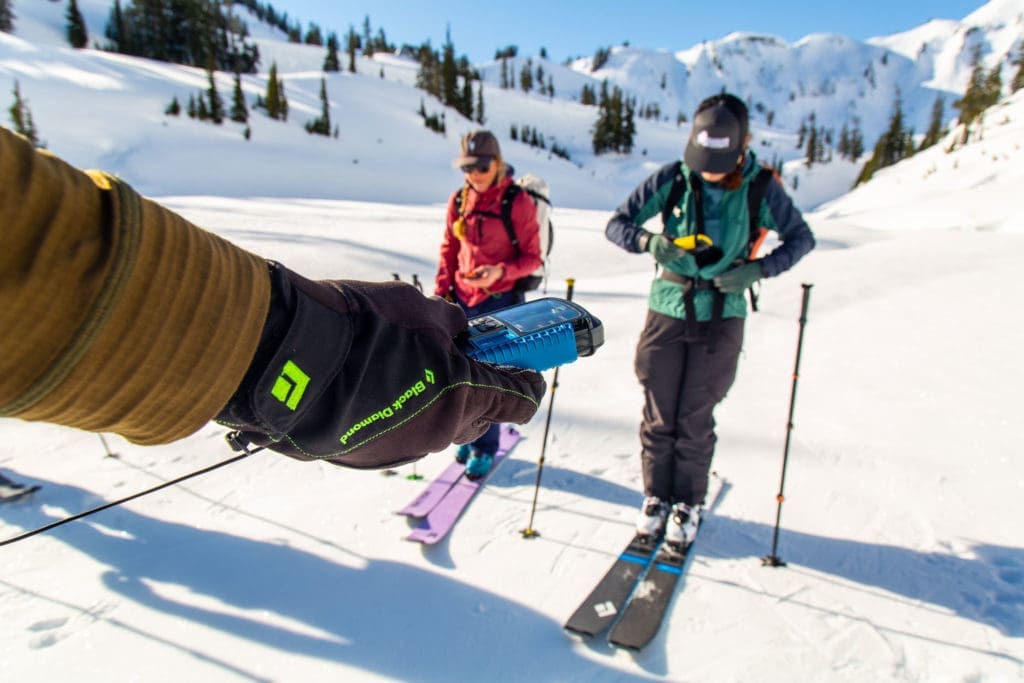
3 Part Check
Beacons at their core have two jobs: to search for a signal and to be searchable by other beacons. Beacons can be damaged in such a way that one of these functions can still work while the other does not, so it’s important to check that both work EVERY TIME you use your beacon.
In the video below, IFMGA Guides Margaret, Mark, and Jeff demonstrate a three-part check for ensuring their beacons are working properly.
1. Battery and Display
Margaret has Mark and Jeff turn on their avalanche beacons, check their displays for any cracks or malfunctions, and then verbally read out their battery percentage. If the beacon you use has bars instead of numbers for batteries, you can simply say “full” for all bars, 2/3, or 1/3. It’s best practice to change your batteries at 50% or manufacturer’s recommendation. Remember… batteries are cheap, your life is not! Oh, and use alkaline batteries! Rechargeable batteries are more susceptible to temperature changes in the cold and can cause your beacon to die while you’re out and about.
2. Search Function
Margaret stays in SEND but has Mark and Jeff switch their beacons to SEARCH mode and take a step or two back. Then Margaret has them read out their numbers on the digital display to ensure that their numbers go down as she moves her beacon closer. Folks can also just turn their displays so that the person doing the check (Margaret in this case) can see their displays and visually identify that the numbers go down as she moves closer.
3. Send Function (Transmit)
Jeff and Mark switch back to SEND and stow their beacons appropriately.
To stow your beacon “appropriately”, one should either use the provided harness and below at least one layer or inside a sewn in pocket. The thought here is that by having the beacon under a layer, it will be less likely to be removed from your body in an avalanche. One should also be aware of any electronics (cell phone, inReach, Radio) that could mess with your beacon’s signal and have at least 30cm (1 foot) of space between them.
After Margaret watches and confirms that Jeff and Mark have stowed their beacons appropriately, she switches to SEARCH and confirms that she can get their individual signals. Margaret then goes back to SEND mode and stows her beacon appropriately. “End in Send.” It’s important that at least one person witnesses the person leading the check going back into send and stowing the beacon appropriately. As humans, we all make mistakes, so the more eyes watching this process, the better!
DBEST or DBEAST Function Check
Another way to think about the beacon function check is by the acronym DBEST or DBEAST (if you have an airbag). Acronyms don’t work for everyone, so if it’s easier just to remember “battery, search, send,” great! But for you acronym people, here ya go:
Display – is not cracked and working appropriately.
Battery – is at least over 50% or per manufacturers recommendation.
Electronics – are at least 30cm away in Send mode and 50cm away in Search
Airbags – if using an airbag backpack, pull out your pull toggle, turn on the unit (if battery), and fasten leg strap.
Search – Everyone is able to find a signal transmitting at the international standard of 457kHz.
Transmit – Everyone is producing a signal at 457kHz.
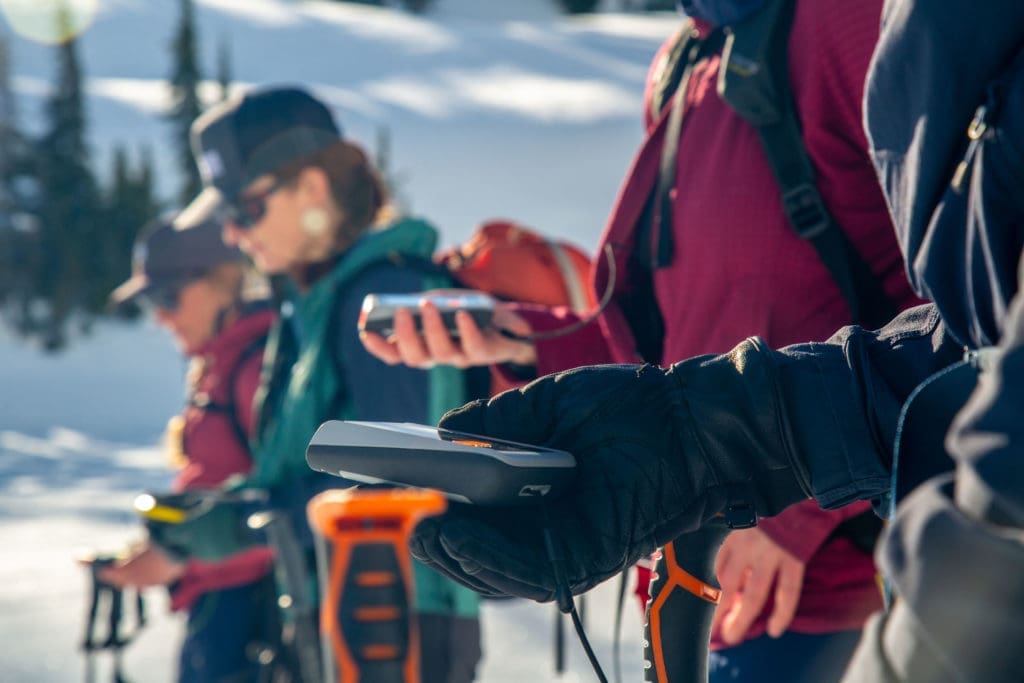
Do IT Before You Leave. DO IT EVERY TIME.
Even if you’re just going on a mellow tour and don’t plan to enter avalanche terrain, do a beacon function check before you leave the parking lot. It takes two minutes. Then you know that you’re searchable and that if anyone (even someone not in your party) gets caught in an avalanche you’ll be able to respond. Don’t wait until you’re at the top of your first run to check your beacons. If they aren’t working, you’re now out in terrain with a potentially compromised beacon. Troubleshoot any issues before you enter the backcountry.
For next steps, if you’re curious about how to actually use your beacon to perform an avalanche rescue, check out our resource on Single Burial Avalanche Rescue. To truly get good at rescue and understand how to use your beacon, take an Avalanche Rescue and/or AIARE Level 1 Course. And, as always, check out The Backcountry Skiing and Riding Guide.

